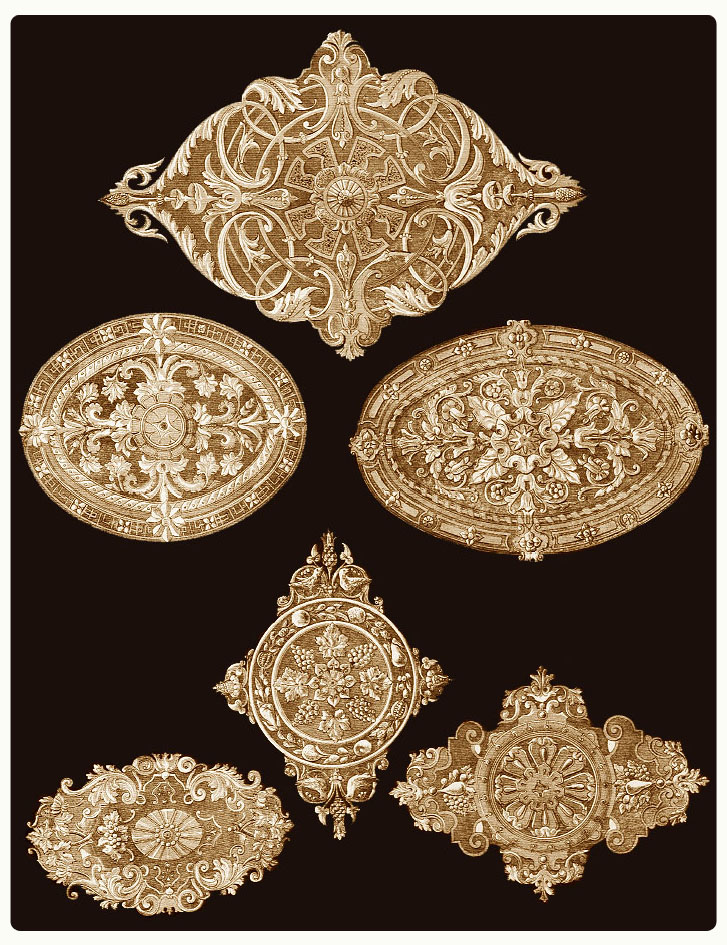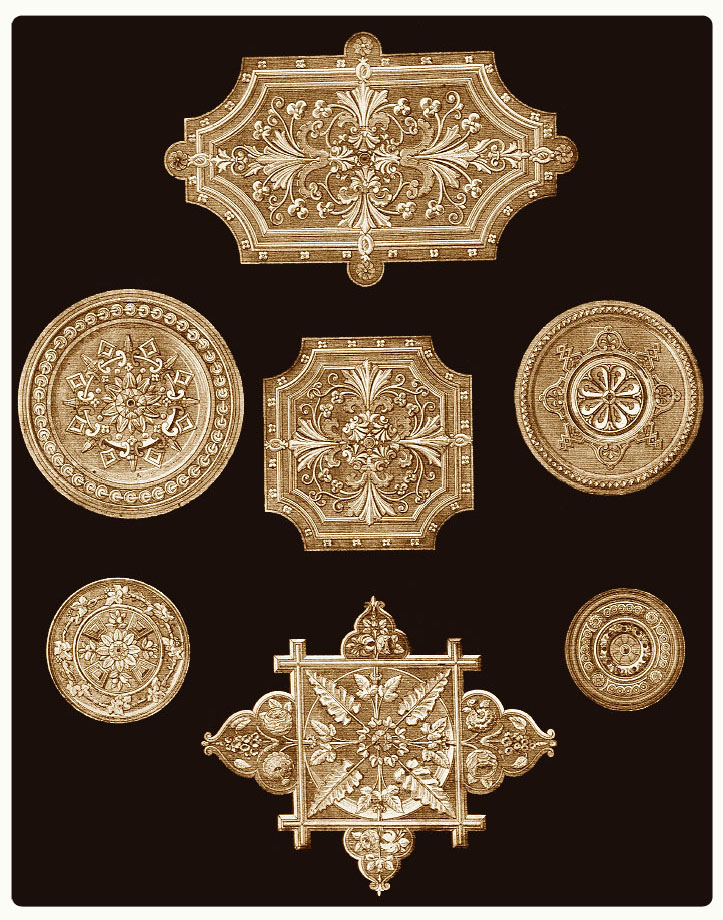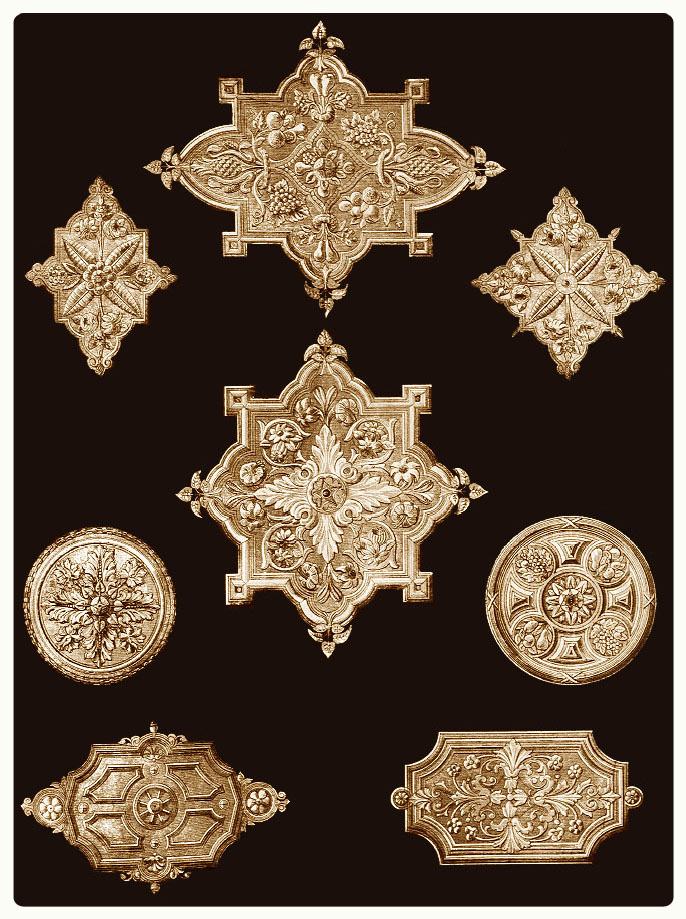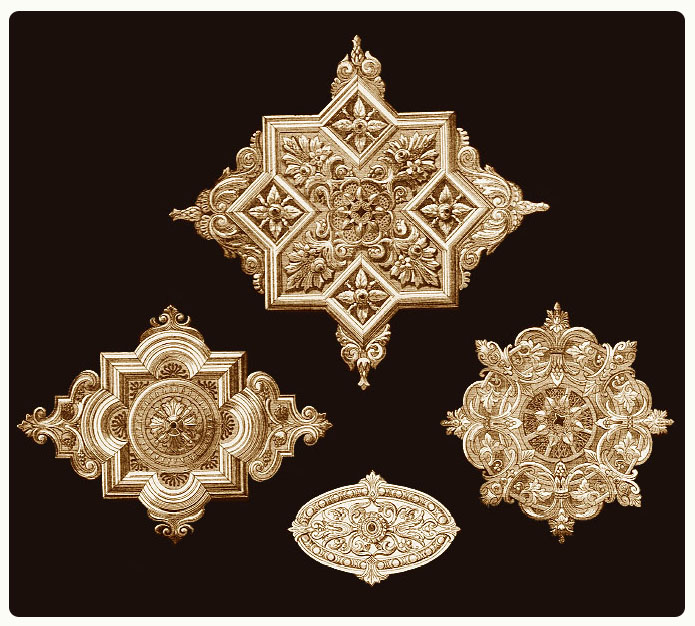Plaster ceiling medallions were first introduced in America in the 18th century. Some know them as rosettes and occasionally they were referred to as “Plaster Centers”. These ceiling centerpieces reached a zenith of popularity in the 19th century. The bigger the room the bigger the medallion was. However, the lower the ceiling the smaller the medallion would get so as to not overwhelm its occupants.
The rims of the medallions went in and out of fashion through the years. The early periods of colonial and regency times found rims quite in fashion. However, during the early Victorian era they took on more of a Rococo appearance without rims. Most medallions were round but by the mid to late 19th century catalogs were featuring all kinds of shapes, as you can see in the examples here dated 1877.
If you are choosing a ceiling medallion a contrast in shape between the medallion and the room is recommended. So round medallions work best in square rooms and the oval shaped ones work well in rectangular rooms.
Medallions were not only there for aesthetics. They often had the function of allowing hooks for chandeliers or gas lighting connections to be hidden from view. They sometimes even doubled as a register for an air duct. Some even believe they were once placed over an oil or gas chandelier in order to catch the soot so that the ceiling would not be dirtied by it. This would enable the homeowner to have only to repaint the medallion and not the entire ceiling.
More examples:




